Table of Contents |
This lesson covers artwork from the years between 1905 and 1913, as shown in the timeline below. You will explore artwork from Paris, France, where the Fauvists revealed their new works of art at the Autumn Salon of 1905. You will also learn about artwork from Dresden, Germany, home of the Expressionist group The Bridge. Finally, you will see artwork from Munich, Germany, home of The Blue Rider, another Expressionist group.
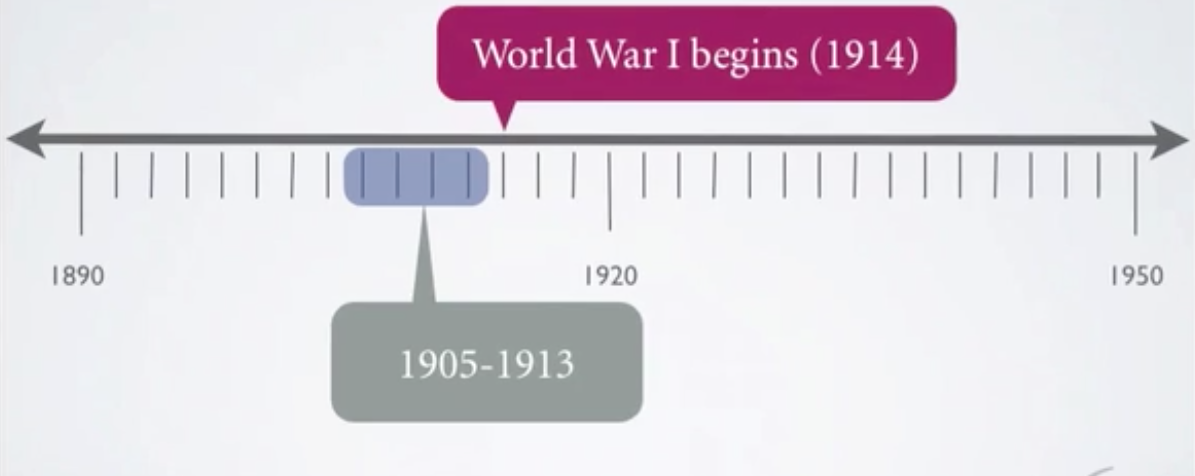
Henri Matisse’s work was unique for many reasons, but his experimentation with forms of painting is largely unequaled. His visual style was broad, which had as much to do with his provincial upbringing as it did with his academic training. In time, his experimentations led him to develop a style negatively dubbed fauvist, or wild, by critics due to its unorthodox painterly approach to color application, depictions of space, and appearance of brush strokes.
Similar to the Impressionists, Fauvists embraced their title. Matisse’s work within this genre of painting was incredibly influential and was largely credited with the development of the Expressionist style that spread throughout Europe in the early 20th century. This contributed to Matisse’s widely held reputation among historians as one of the most important, if not the most important, French painters of the 20th century.
EXAMPLE
Below is a painting of Matisse’s wife, “La Femme au Chapeau” (“Woman With a Hat”):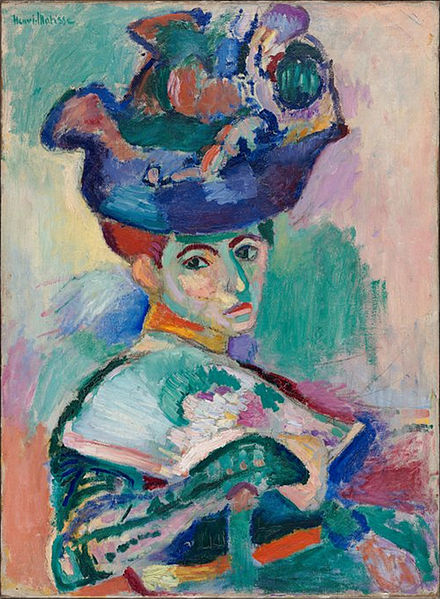
This painting, along with several others of a similar style, was presented at the Autumn Salon of 1905 in Paris, and it was genuinely abhorred by critics of the time. However, it marks an important stylistic change in Matisse's work. He was emphasizing the use of color and brushstroke, much like the Impressionists and Post-Impressionists that preceded him. Matisse began using these elements to evoke an expression of human emotion from his own unique point of view.
This technique strays from Impressionist artists’ use of color and brushstroke to depict the observable effects of light. In other words, Impressionists were externally influenced while Expressionists were internally influenced.
The second painting by Matisse is also of his wife, and it is another example of his use of color to define features and evoke a feeling.
EXAMPLE
Below is “Portrait of Madame Matisse,” originally titled “La Raie Verte,” which translates to “The Green Stripe” or “The Green Line.”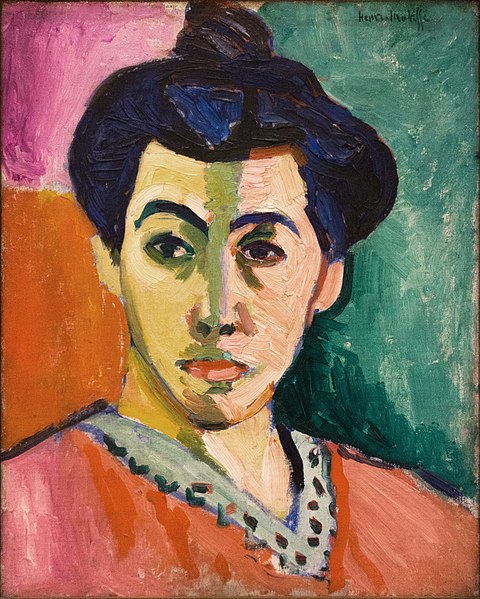
Notice the flatness to the work above, which recalls the work of Cezanne and Gauguin. A green stripe down the middle of her face breaks the form into two sides: one cooler and the other warmer. Rather than play with the color value, as one would in a realistic portrait, Matisse substitutes the colors outright. He doesn’t use a naturalistic palette because this isn’t an interpretation of what he sees but rather his interpretation of the emotion being projected.
In Germany, two Expressionist groups formed within about five years of each other and shared the common goal of expression in art, but each emphasized different areas. These two groups were:
This particular painting by Kirchner, titled “Street, Dresden,” is an example of the type of subject matter The Bridge artists concerned themselves with.
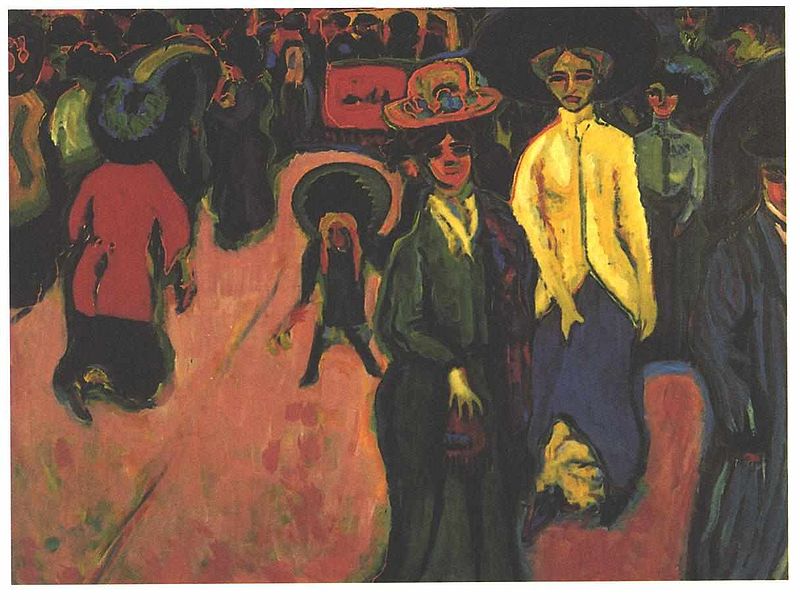
1908
Oil on canvas
The name The Bridge refers to the fact that these artists saw their work as a bridge between the past and the future. Members lived a more Bohemian lifestyle, which they felt was a sharp contrast to that of the bourgeoisie. They were interested in Primitivism, such as Oceanic art and German folk art, and traveling to remote areas of Germany on retreats.
They revived the woodcut, but they emphasized rough, broad lines in this medium instead of trying to hide them. With this particular example, Kirchner uses color and form to explore themes of anxiety and tension he felt were the alienating experience of modern life in the city. The technique is effective, as the overall sense from the painting isn’t particularly positive. Although the image is full of people, there’s no intimacy or interaction between figures.
EXAMPLE
Compare the above painting with this painting of the city by Renoir: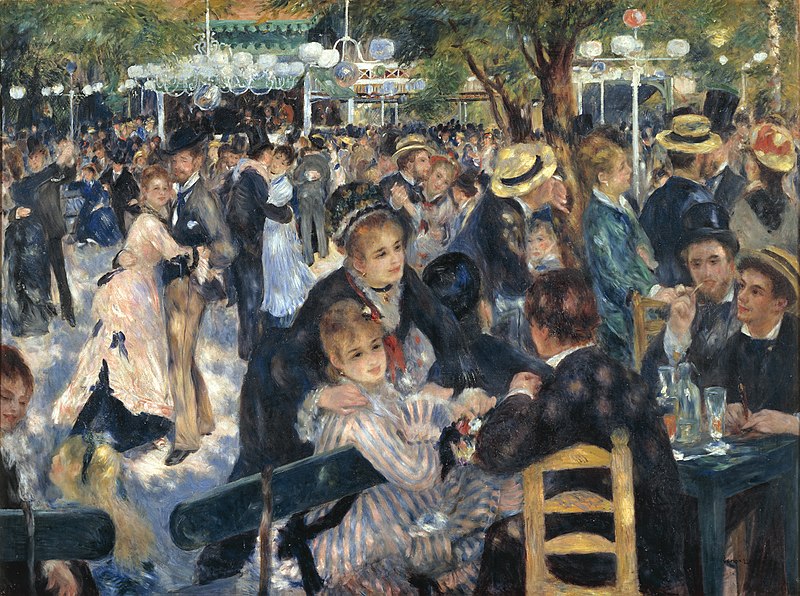
Franz Marc and Wassily Kandinsky were co-founders of the group that came to be known as The Blue Rider. Like Kandinsky, Marc was a spiritual person. His paintings of the early 20th century were predominantly of animals, which he felt were spiritually closer to nature. However, as the feeling of impending war loomed over many people in Europe, Marc included, his work began to take on a less optimistic feel.
EXAMPLE
Below is the painting by Fraz Marc titled “Fate of the Animals.”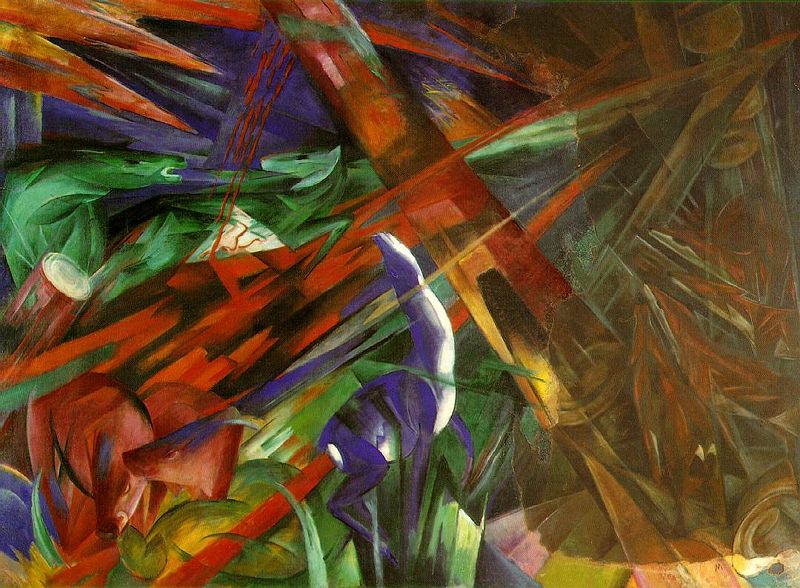
Marc was a deeply religious person, and he spoke about how he began to see the less glamorous aspect of humanity present in animals. He noticed how animals were subject to an apocalyptic cleansing just like humans. This is an important shift because animals had once represented all that was pure in nature for Marc.
This shift is evident in his visual style as well as the sharp geometric shards, inspired by Cubism, that separate and isolate the animals represented within the picture. This new style seemed to replace the more tranquil and communal imagery from previous years. “Fate of Animals” is an example of this shift and likely Marc’s most famous painting.
Kandinsky’s work has a positivity and optimism in it that some find appealing. Kandinsky is widely considered one of the first artists to explore pure abstraction in his paintings. He was a spiritual person, and he sought to express the internal rather than respond to the external. He felt his work could inspire those that sought to achieve greater spiritual awareness.
His work also explored the possibilities of depicting a visual expression of music. He’s believed to have had the condition known as synesthesia, in which there is some cross-talk between the senses in the brain.
This condition of synesthesia may very well explain his affinity for Expressionism as well as his naming scheme for his paintings, which follow that of classical music, using such words as Composition and Improvisation.
EXAMPLE
His painting “Improvisation 28” was considered by Kandinsky himself to be his first purely abstract work of art..jpg)
Source: THIS WORK IS ADAPTED FROM SOPHIA AUTHOR IAN MCCONNELL.